My travel to South Pole and McMurdo in January 2000
Travel to South Pole involves another 3 hour flight on a "Herc" LC-130 from McMurdo. The "L" in LC-130 means that the plane is equipped with skis, which are needed to land on the snow runway at South Pole..
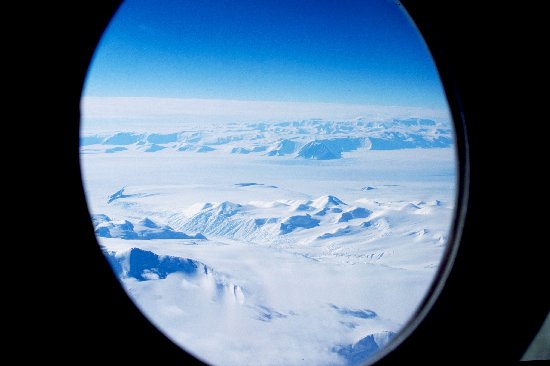
View on a mountain range enroute to South Pole. The polar ice cap - a plain without structure at high altitude - appears in the background.
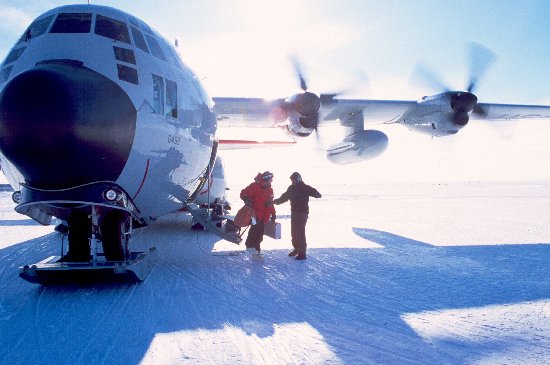
Disembarking the LC-130 at South Pole. The engines keep running to prevent them from freezing.
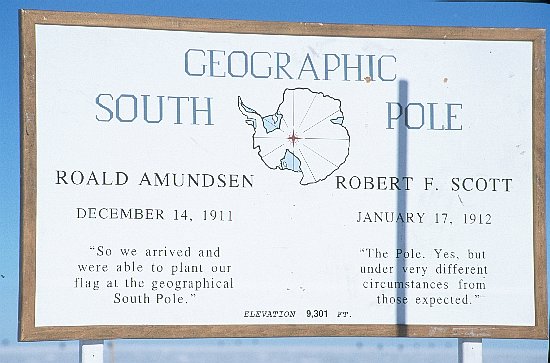
Plaque erected one meter next to the South Pole. The shadow is from the rod that is tucked in the snow at the place of the pole. The exact location of the pole is surveyed once a year. This is necessary because the ice cap drifts by about 10 meters each year over the Antarctic continent, lying 3000 meter underneath.
The board is commemorating Roald Amundsen and Robert F. Scott who were the first men who reached the South Pole with their expeditions. In fact, it was a competition between these ambitious men. Amundsen arrived about four weeks before Scott and made it back home in safety. Scott was incredible disappointed that Amundsen had beat him, as the quotation on the plaque proves. He and his party got trapped in a terrible blizzard on their way back and all men perished. Their corpses were found few weeks later not far from the next food storage camp, which would have saved them.
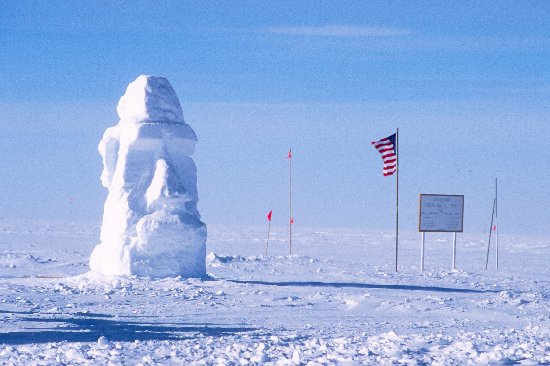
Next vicinity of the South Pole. From right to left: Rods marking the average and "instantaneous" South Pole, as measured on January 1, 2000. (There is a difference between both poles of about one meter because the Earth is not only turning but also wobbling around its average axis of rotation.) Plaque commemorating Amundsen and Scott, U.S. flag, and snow statue built by an unknown artist from the South Pole staff resembling one of the ancient stones erected on the Easter Islands.
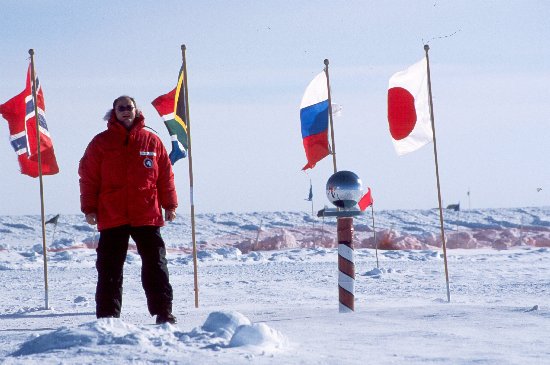
Me, standing next to the "Ceremonial Pole" consisting of a wooden rod with a reflecting metal sphere on top. Such a pole marker was first used during the "International Geophysical Year" in 1957, when the first South Pole station was built. According to rumors that I have heard, the sun reflecting in the sphere helped planes to find the pole in the middle of a vast icy plain. The original sphere can now be admired in the Canterbury Museum in Christchurch New Zealand, which also accomodates a comprehensive Antarctic exhibition. The flags around the Ceremonial Pole are from the twelve countries that initially signed the Antarctic Treaty, regulating international activities in Antarctica.
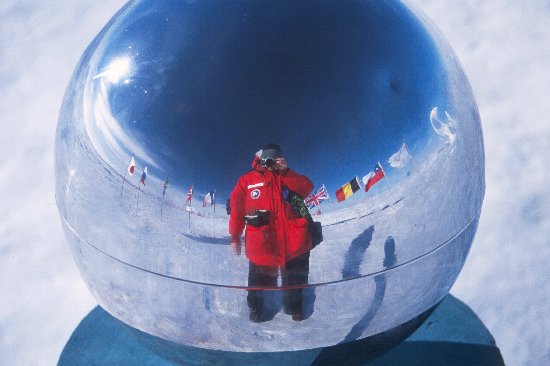
Photographing my own image mirrored in the Ceremonial Pole's sphere.
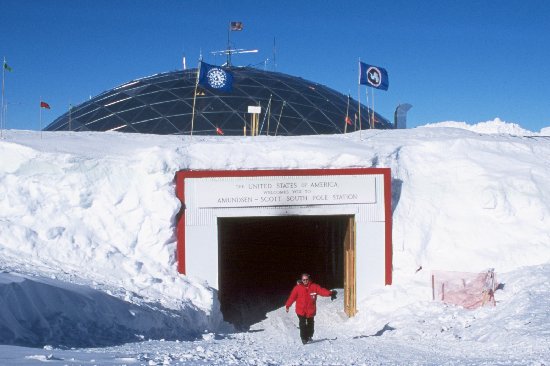
Main entrance of the U.S. Amundsen-Scott South Pole Station. Inside the 30 meter high "Geodesic Dome" are the canteen (it's called "Galley"), administration and communication facilities, the station's science headquarters, a greenhouse for "freshies", dormatories and even a work-out room. Only a fraction of the 220 people living during summer at South Pole can actually sleep inside the dome. The rest dwells outside in "Jamesways", which are heated tends. Between me and the dome is an arch, housing fuel storage and the station's power plant. The dome was built in the 1970s and is at the end of its projected live-time. Currently a new station is therefore built, which will probably be ready by 2005.
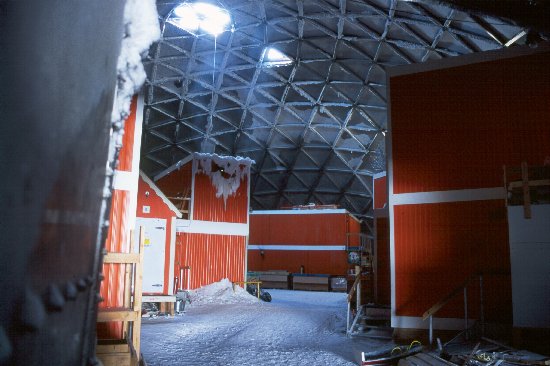
Inside the Geodesic dome. The containers on the right side include the Galley and the station's one and only pub. In the background is the communication and administration complex. The container in the middle houses the greenhouse.
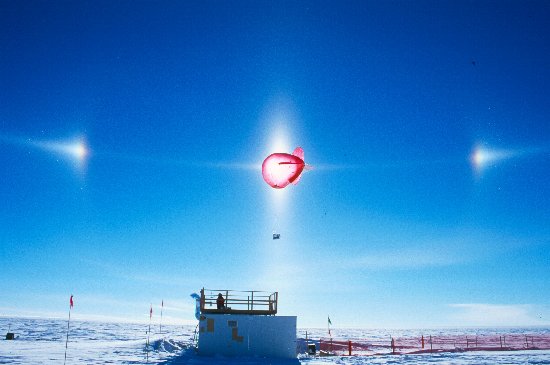
Halo around the sun (which itself is hidden behind an orange air ship). Halos are caused by ice crystals in the air, refracting sun light. Each halo looks different, depending on the shape and composition of the crystals. Halos at South Pole are most spectacular because the combination of low temperatures and wind forms snow crystals of ideal hexagonal shape buzzing in the air. The white ring on the photo goes through the sun in the middle, intersects with the halo around the sun forming two bright spots, and proceeds parallel to the horizon all around the celestial dome. So it can be seen even at the opposite side of the sun.
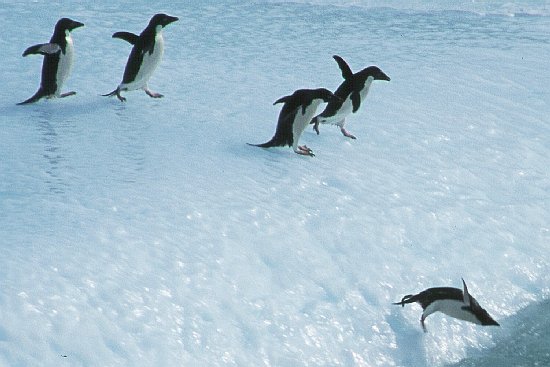
After I returned from South Pole I went on a cruise in McMurdo sound with an icebreaker, which holds the passage to McMurdo's harbor free of ice. We saw incredible amounts of wild life from the ship, including penguins (photo above), whales, seals, and birds.
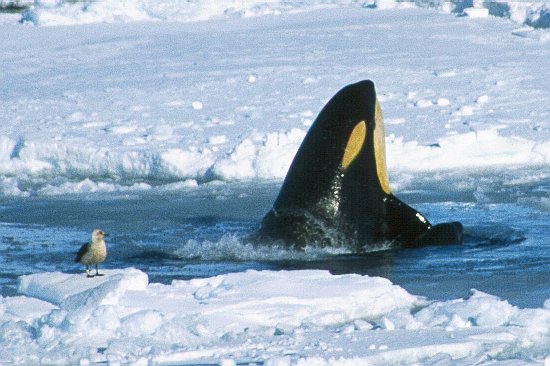
Orca whale looking around after being disturbed by our icebreaker.
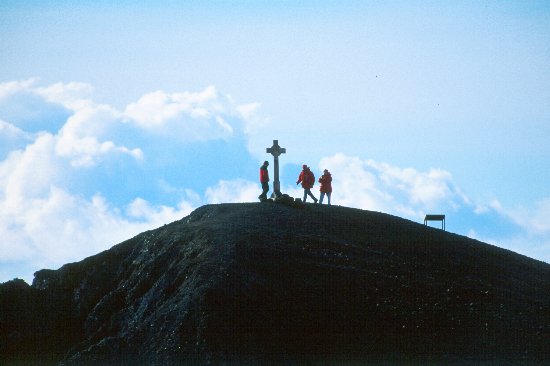
Hut point at the end of McMurdo harbor. The cross is commemorating George Vince who perished not far away 90 years ago.